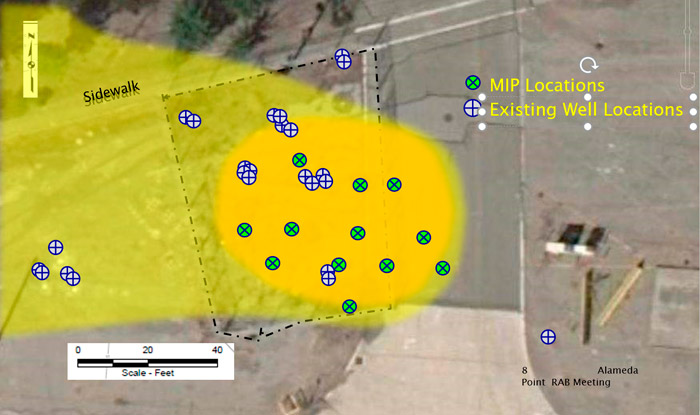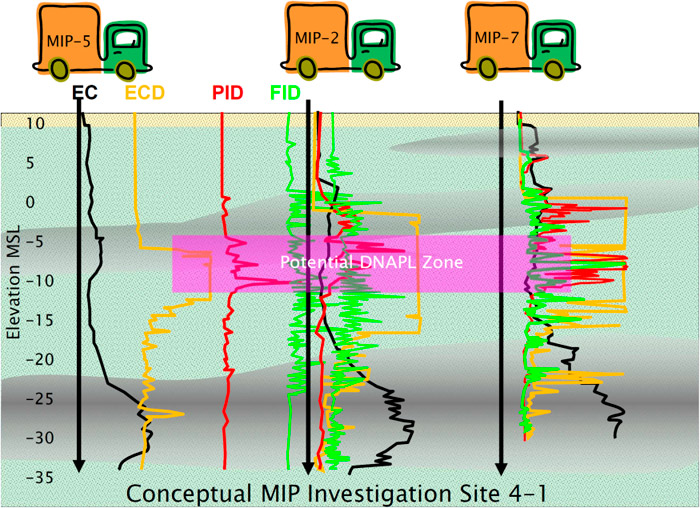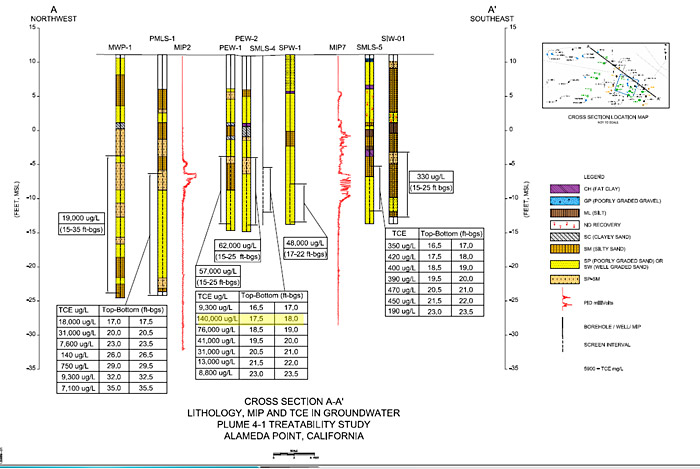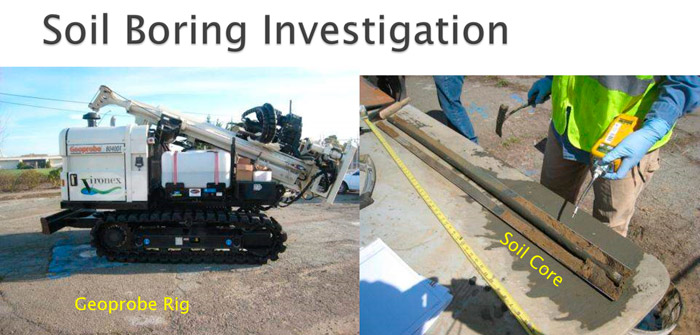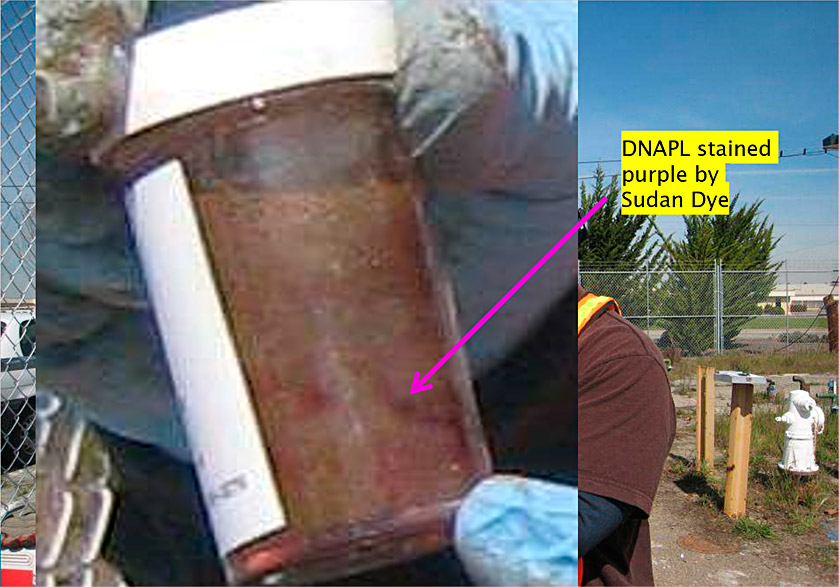9.2 MIP Allows Real-Time Identification and Delineation of DNAPL Plume at a Former Naval Air Station in California
| Eliot Cooper Director of Technology Innovation Gregg Drilling, Remediation Division [email protected] |
| Information presented in this case study is based on investigations conducted by Shaw Environmental and Vironex Field Services |
In 2010 the U.S. Navy engaged in remediation for Operable Unit (OU) 2B Installation Restoration Sites 3, 4, 11, and 21 at the Former Naval Air Station (NAS) Alameda in Alameda, California. Site 4 (Aircraft Engine Facility) covers approximately 22.7 acres and includes Building 360, which was used for aircraft engine and airframe overhaul. Building 360 operations contributed to the existence of a large VOC plume located within OU-2B. A portion of the plume located within Site 4, referred to as Plume 4, consists of two lobes that trend east-west through Site 4. The northernmost lobe of the plume is associated with source area 4-1.
Despite years of groundwater sampling indicating the presence of DNAPL, DNAPL could not be located or identified, impeding overall remediation of a Plume 4. Because the probability of sufficiently defining both the vertical and horizontal extent of a DNAPL zone with traditional sampling is low, site characterization was perfomed using a MIP advanced by direct-push drilling. This was followed by continuous soil core sampling and use of Sudan dye to help identify the presence of a high TCE mass (see Figure 9‑2) and, if identified, determine if this mass was DNAPL.
The MIP uses up to four detectors (PID, FID, ECD and XSD) to respond to volatile chlorinated solvent contaminants. These detectors provide responses as eV that can be used to assess the amount of contaminant mass in the subsurface. Based on years of experience in logging chlorinated solvent sites and corresponding traditional soil and groundwater sampling, levels greater than 1 x 106 to 1 x 107 uV from the PID detector may indicate contaminant mass at DNAPL levels.
Figure 9‑2. Locations of existing wells and MIP borings in assumed source (dark yellow) and plume (light yellow).
Based on the level of responses of both the ECD (>1.4 x 107 uV) and PID ( >1 x 106 to 1 x 107 uV), a potential DNAPL zone was identified from approximately 15- to 22-ft below ground surface (see Figure 9‑3 and Figure 9‑4).
Figure 9‑3. Potential DNAPL interval identified by ECD and PID tools.
Figure 9‑4. Identified source core (light red) and DNAPL area (dark red).
Following the MIP screening, discreet groundwater samples were collected from the high-PID-response depth intervals (see Figure 9‑5). Based on these results, corresponding soil samples were collected (see Figure 9‑6) and DNAPL was confirmed through staining with Sudan red dye (see Figure 9‑7).
Figure 9‑5. TCE Groundwater concentrations in µg/l.
Figure 9‑6. Soil core collection with Geoprobe DT8040.
Figure 9‑7. Sudan Dye staining indicating TCE DNAPL.
Previous attempts to locate the suspected TCE DNAPL source area were costly and unsuccessful. The cost associated with this integrated approach provided an excellent return on characterization investment. After identifying the TCE DNAPL source zone, a targeted DNAPL treatment strategy was applied, leading to expedited cleanup of the source area and plume.
Click here to download the entire document.

